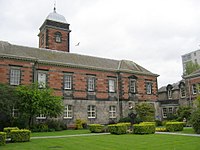
Lady Margaret Hall (LMH) is one of the constituent colleges of the University of Oxford in England, located on a bank of the River Cherwell at Norham Gardens in north Oxford and adjacent to the University Parks. The college is more formally known under its current royal charter as "The Principal and Fellows of the College of the Lady Margaret in the University of Oxford".

The Wych Elm cultivar Ulmus glabra 'Camperdownii', commonly known as the Camperdown Elm, was discovered about 1835–1840 as a young contorted elm growing in the forest at Camperdown House, in Dundee, Scotland, by the Earl of Camperdown's head forester, David Taylor. The young tree was lifted and replanted within the gardens of Camperdown House where it remains to this day. The original tree, which grows on its own roots, is less than 3 m tall, with a weeping habit and contorted branch structure. The earl's gardener is said to have produced the first of what are commonly recognised as Camperdown elms by grafting a cutting to the trunk of a wych elm.

The University of Dundee is a public research university based in Dundee, Scotland. It was founded as a university college in 1881 with a donation from the prominent Baxter family of textile manufacturers. The institution was, for most of its early existence, a constituent college of the University of St Andrews alongside United College and St Mary's College located in the town of St Andrews itself. Following significant expansion, the University of Dundee gained independent university status by royal charter in 1967 while retaining elements of its ancient heritage and governance structure.

Sir Patrick Geddes was a Scottish biologist, sociologist, Comtean positivist, geographer, philanthropist and pioneering town planner. He is known for his innovative thinking in the fields of urban planning and sociology.
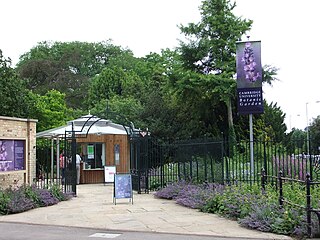
The Cambridge University Botanic Garden is a botanical garden located in Cambridge, England, associated with the university Department of Plant Sciences. It lies between Trumpington Road to the west, Bateman Street to the north and Hills Road to the east.

The Royal Botanic Garden Edinburgh (RBGE) is a scientific centre for the study of plants, their diversity and conservation, as well as a popular tourist attraction. Founded in 1670 as a physic garden to grow medicinal plants, today it occupies four sites across Scotland—Edinburgh, Dawyck, Logan and Benmore—each with its own specialist collection. The RBGE's living collection consists of more than 13,302 plant species, whilst the herbarium contains in excess of 3 million preserved specimens.

The City Botanic Gardens is a heritage-listed botanic garden on Alice Street, Brisbane City, City of Brisbane, Queensland, Australia. It was also known as Queen's Park. It is located on Gardens Point in the Brisbane CBD and is bordered by the Brisbane River, Alice Street, George Street, Parliament House and Queensland University of Technology's Gardens Point campus. It was established in 1825 as a farm for the Moreton Bay penal settlement.
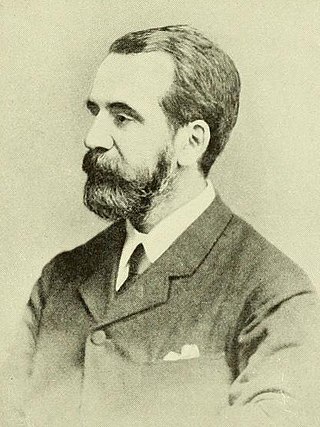
Sir George King was a Scottish-born British botanist who was appointed superintendent of the Royal Botanic Garden, Calcutta in 1871, and became the first Director of the Botanical Survey of India from 1890. He was recognised for his work in the cultivation of cinchona and for setting up a system for the inexpensive distribution of the anti-malarial quinine throughout India through the postal system.

The Harris Garden is a botanical garden of the University of Reading, situated about 2 miles (3.2 km) from the centre of the English town of Reading. It was established in 1972 and expanded into its current form in 1988. It is named after Professor Tom Harris, a distinguished palaeobotanist and keen gardener. Friends of the Harris Garden is an organisation set up with the aim of supporting the garden.

Old College is a late 18th-century to early 19th-century building of the University of Edinburgh, Scotland. It is located on South Bridge, and presently houses parts of the University's administration, the University of Edinburgh School of Law, and the Talbot Rice Gallery.

The College Des Ecossais was founded by Patrick Geddes in 1924 as an international teaching establishment located in Montpellier, in the south of France.
Sir Frank Charles Mears LLD was an architect and Scotland's leading planning consultant from the 1930s to the early 1950s.

Rogers McVaugh was a research professor of botany and the UNC Herbarium's curator of Mexican plants. He was also Adjunct Research Scientist of the Hunt Institute in Carnegie Mellon University and a Professor Emeritus of botany in the University of Michigan, Ann Arbor.
Harold Norman Moldenke, also known as simply Moldenke (1909–1996) was an American botanist/taxonomist. His expertise is largely in the study of Verbenaceae, Avicenniaceae, Stilbaceae, Dicrastylidaceae, Symphoremaceae, Nyctanthaceae and Eriocaulaceae.
Henry Phillips was a botanist, horticultural writer and landscape gardener from the seaside resort of Brighton in England. After spending time as a banker and teacher in London and Sussex, he came to national attention for his botanical articles and books, and was renowned for his landscape gardening work in Brighton during its period of rapid growth. In the 1820s he became involved in several major schemes in the town and neighbouring Hove, encompassing gardens, conservatories and similar. His grandiose Anthaeum project, an elaborate indoor botanical garden topped by "the largest dome in the world", ended in disaster when the structure spectacularly collapsed just before its official opening.

The jacaranda was a historically significant specimen of Jacaranda mimosifolia tree that stood in the south-eastern corner of the University of Sydney main quadrangle, and now describes its clone replanted in the same location.

Caroline Black was an American botanist. Educated at Indiana University, she later taught at the University of New Hampshire and became the first chairperson of the Connecticut College botany department. Black was a founding member of the New London Garden Club. Following her death in 1930, the Connecticut College Board of Trustees named the Caroline Black Garden in her honor.
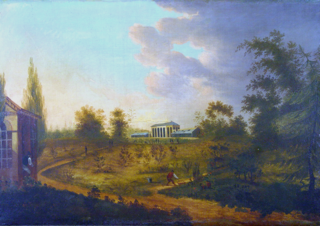
The Elgin Botanic Garden was the first public botanical garden in the United States, established in 1801 by New York physician David Hosack. By 1810, Hosack was no longer able to fund the garden's expenses, and sold the land to the State of New York. The property was given to Columbia College in 1814, and the gardens were abandoned. In the 1920s, it became the site of Rockefeller Center.
Edward Edmund Kemp, known as Eddie Kemp, was a Scottish horticulturist. He served as curator of the Royal Botanic Garden Edinburgh from 1950 to 1971, then as the founding curator of the University of Dundee Botanic Garden from 1971 to 1980.
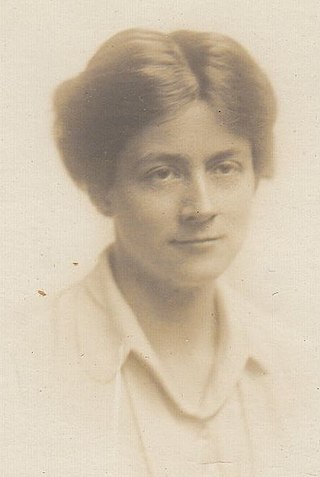
Norah Geddes (1887–1967) was a Scottish landscape designer.

















